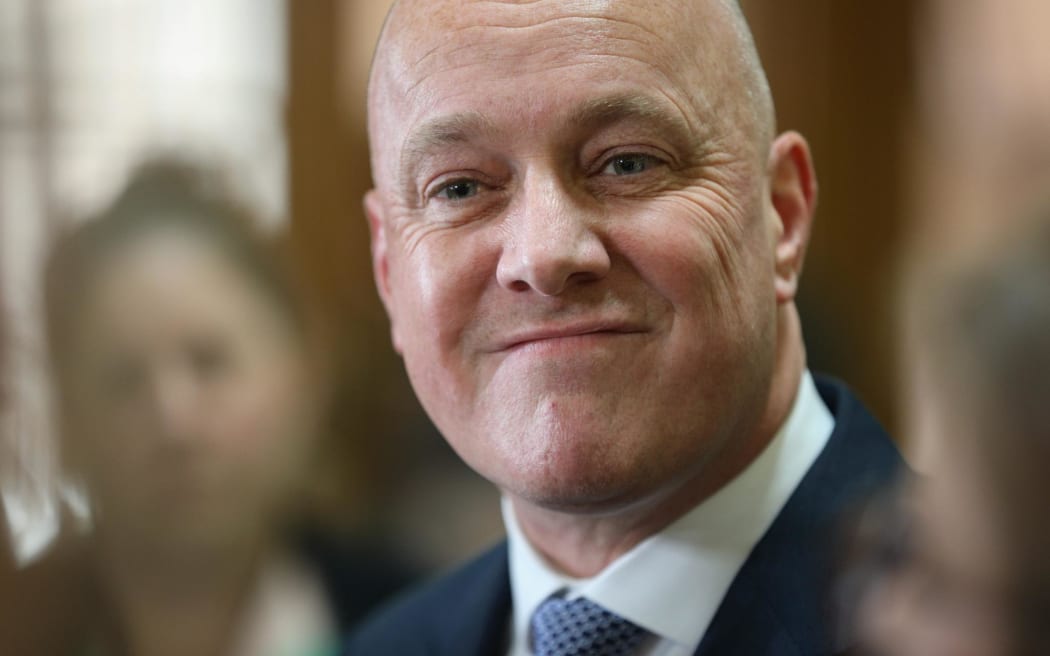
National Party leader Christopher Luxon announced on Thursday that coalition negotiations between his party, ACT and New Zealand First had concluded, with a formal signing ceremony to take place once the parties' boards had ratified the deal. Photo: RNZ / Angus Dreaver
Seeing how many of the National Party's first 100 days campaign promises have survived the coalition negotiations will be a key thing to look for when the arrangements for government are announced today, a constitutional law expert says.
Graeme Edgeler told RNZ's Morning Report he would be interested to see how much support was "baked in" to the coalition agreement for National's headline policies.
"Certainly the thing you'd be looking for is National's first 100 day promises - are any of those promises things they haven't been able to get agreement to?"
National's leader Christopher Luxon said on Thursday the coalition deal-making was done; and there would be a signing ceremony this morning with his party, ACT, and New Zealand First.
Luxon said he was hoping he - and his ministers - would be sworn in by the Governor-General on Monday and he would be advising Dame Cindy Kiro to summon Parliament to meet for the first time since the election on 5 December.
Edgeler said the numbers for the coalition were "quite tight", which meant that to pass any legislation at all "fundamentally, National, ACT and New Zealand First are all going to have to agree to vote for it".
It would be important to look at the detail of not just what the parties had agreed to do now, but also what the coalition documents said about the processes the parties had agreed on in order to settle any future disagreements, he said.
"Because [if] any one party of that group decides to vote against something the government's not going to be able to do it, even if the others feel very strongly about it."
The process of swearing in a new government
Edgeler said New Zealand's processes to install a new government were different to those observed in some countries, such as the United Kingdom where some of the process happened behind closed palace doors.
"We like to do it in the open and I think that's quite a good way of doing it, to be honest."
While Dame Cindy had been informed that a public statement was coming, she and members of the general public would "essentially find out at the same point" about what had been decided, he said.
"The Governor-General doesn't really have to do anything apart from watch TV and just realise, oh yes, it's three parties, they add up to more than half of Parliament, they've got enough to govern."
The swearing-in of the new government, likely on Monday, would see ministers heading to Government House where "we can see first the prime minister being sworn in and the prime minister recommending that a whole bunch of other ministers be sworn in, and at that point, we will have a new government".
There would then be two openings of Parliament, Edgeler said, the first of which would see MPs sworn in and a Speaker elected.
"They will probably tell us whom they'll be nominating (for the role of Speaker) - presumably that will be something they mention when they tell us who the ministers will be, we'll notice that someone's name is missing from the ministers list and possibly guess that that person might be the speaker - they might actually say."
The following day would see the Governor-General give the "speech from the throne" at the legislative council chamber, he said.






